Key Takeaways
- Skills-based hiring, AI-driven recruitment and continuous listening are essential for attracting and retaining high-quality talent in 2026.
- Glocal HR strategies and fluid workforce models help organisations balance global consistency with local adaptability and workforce flexibility.
- Predictive analytics and strategic workforce planning enable HR teams to anticipate skill gaps, optimise hiring decisions and strengthen long-term talent readiness.
The world of recruitment and human resources is undergoing one of the most significant periods of transformation in modern history. Over the past few years, organisations have been forced to rethink how they attract, assess, hire, develop and retain talent. Advancements in artificial intelligence, shifts in candidate expectations, demographic changes, globalisation of the workforce, and continual disruptions in labour markets have collectively pushed HR leaders and talent-acquisition professionals to reconsider long-established playbooks. As 2026 approaches, this evolution is no longer a distant forecast but an immediate strategic imperative. Companies that fail to anticipate the next wave of HR and recruitment shifts risk falling behind competitors that are actively redesigning their people strategies around future-ready frameworks.

Recruitment today is no longer just about filling vacancies. It has expanded into a comprehensive, data-driven discipline that requires deep understanding of business strategy, emerging technology, workforce behaviours and global employment dynamics. HR teams must now go beyond administrative excellence to deliver measurable value across organisational performance, workforce agility, employer branding and long-term talent sustainability. The growing complexity of talent markets, from persistent skill shortages to the rise of flexible employment models, has intensified the need for innovation in hiring practices. At the same time, employees and candidates are demanding more transparent, flexible and human-centred experiences, forcing organisations to elevate their approach to engagement and retention.
This changing landscape is further shaped by the rapid adoption of AI-powered tools that are automating tasks traditionally handled by recruiters and HR specialists. From intelligent sourcing systems to predictive workforce-planning platforms, these technologies are shifting the role of talent professionals from process managers to strategic advisors. The expansion of agentic AI, generative systems, and advanced analytics opens new doors for efficiency and insight, but it also presents governance, ethical and capability challenges that organisations must navigate carefully. HR is now at the intersection of technological innovation and human empowerment, with 2026 set to be a landmark year that defines how well companies balance automation with empathy, efficiency with fairness, and intelligence with integrity.
At the same time, the structure of the workforce itself is shifting. Remote and hybrid models have matured, global hiring has become mainstream, and contingent workforces are expanding across industries. Organisations must now design recruitment processes that are not only efficient and compliant across borders but also culturally adaptable, inclusive and scalable. These changes require recruitment functions to operate with unprecedented agility, combining global standards with local understanding. The traditional boundary between recruitment, HR management, employee experience and organisational development is becoming increasingly blurred, demanding integrated strategies that take the entire employee lifecycle into account.
For HR leaders, talent-acquisition specialists, business owners and executives, understanding the key trends shaping 2026 is no longer optional; it is fundamental to staying competitive. The coming year will reward organisations that embrace skills-based hiring, invest in data and analytics, adopt AI responsibly, prioritise employee experience, and develop workforce strategies that support both globalisation and flexibility. Those that continue to rely on outdated recruitment practices, slow talent processes or limited technology adoption will struggle to attract the skills needed to compete in a rapidly transforming economic environment.
This article explores the top five recruitment and HR trends that will define 2026, offering a comprehensive, strategic and forward-looking analysis backed by emerging research, industry data and observable market shifts. By understanding these trends, organisations will be better positioned to future-proof their hiring practices, strengthen their employer brand, enhance workforce agility and create sustainable talent pipelines for the years ahead. The following sections break down each trend in detail, outlining what it means, why it matters, and how HR teams can take immediate action to adapt their strategies for a more competitive and fast-moving world of work.
Before we venture further into this article, we would like to share who we are and what we do.
About 9cv9
9cv9 is a business tech startup based in Singapore and Asia, with a strong presence all over the world.
With over nine years of startup and business experience, and being highly involved in connecting with thousands of companies and startups, the 9cv9 team has listed some important learning points in this overview of the Top 5 Recruitment and HR Trends to Know for 2026.
If your company needs recruitment and headhunting services to hire top-quality employees, you can use 9cv9 headhunting and recruitment services to hire top talents and candidates. Find out more here, or send over an email to [email protected].
Or just post 1 free job posting here at 9cv9 Hiring Portal in under 10 minutes.
Top 5 Recruitment and HR Trends to Know for 2026
- Skills-Based Hiring and Internal Mobility
- AI-Driven Talent Acquisition and HR Automation
- Employee Experience, Continuous Listening & Flexibility
- Global-Local (Glocal) HR Strategies and Contingent/Fluid Workforce Models
- Analytics, Insights-Driven Recruitment & Strategic Workforce Planning
1. Skills-Based Hiring and Internal Mobility
The move toward skills-first hiring represents one of the most profound changes redefining recruitment in 2026. Organisations are increasingly prioritising what candidates can demonstrably do over where they were educated or the job titles they previously held. This transition is driven by persistent skills shortages across critical sectors, rapid technological change and the growing mismatch between traditional qualifications and real-world performance. Instead of evaluating candidates solely through degrees or tenure, hiring teams now assess capabilities, competencies, micro-skills and hands-on achievements.
In practice, this shift means organisations are rewriting job descriptions, redesigning recruitment funnels and adopting assessment methods that focus on demonstrable proficiency. For example, technology companies are moving away from requiring computer science degrees and instead using technical assessment platforms that measure problem-solving ability, coding fluency and logical reasoning. Marketing agencies are evaluating candidates through portfolio-based reviews and scenario tests rather than relying on years of experience. Logistics companies are adopting simulations that evaluate real-world decision-making for warehouse or operations roles.
Underlying this trend is a recognition that performance often correlates more strongly with skills mastery than with credentials. This is particularly evident in emerging fields such as AI operations, product analytics, digital marketing, cloud engineering and cybersecurity—domains where new tools and methodologies evolve faster than university curricula. As companies race to stay competitive, skills-based hiring provides a more reliable and future-proof method of bringing talent into the organisation.
Matrix: Traditional Hiring vs Skills-Based Hiring
| Category | Traditional Hiring Model | Skills-Based Hiring Model |
|---|---|---|
| Primary evaluation criteria | Degrees, job titles, years of experience | Capabilities, competencies, hands-on performance |
| Screening methods | Resume scanning, qualification checklists | Skills assessments, simulations, portfolio evaluations |
| Candidate pool | Narrow, excluding non-traditional pathways | Wider, inclusive of diverse backgrounds and self-taught talent |
| Predictive accuracy | Moderate, often biased toward credentialed candidates | Higher, rooted in measurable performance indicators |
| Adaptability to new roles | Low; focused on legacy qualifications | High; prioritises transferable micro-skills |
Building Internal Talent Pipelines
Skills-based hiring is only one component of a broader workforce strategy. As external hiring becomes more competitive and costly, internal mobility has emerged as a complementary and equally critical trend for 2026. Instead of defaulting to external recruitment, organisations are increasingly investing in developing and redeploying existing employees. This approach extends employee tenure, reduces hiring costs and strengthens organisational resilience.
Internal mobility can take many forms: lateral moves, upward transitions, cross-functional rotations or project-based assignments. A global consumer-goods company, for example, introduced a skills marketplace platform that matches employees’ competencies to internal projects, enabling them to build new capabilities while contributing to strategic initiatives. This model helped reduce external hiring by over 30 percent. Another example comes from a financial institution that eliminated degree requirements for entry-level analyst roles and encouraged employees from operations and customer service departments to transition into data analytics through structured reskilling programs. This not only addressed talent shortages but significantly improved retention and morale.
For internal mobility to succeed, organisations must have clear skills taxonomies, transparent career pathways and data-driven talent development programs. HR teams need to maintain a dynamic inventory of employee capabilities, identify skill gaps across departments and recommend personalised learning plans. By treating employees as long-term assets rather than short-term resources, companies can create sustainable pipelines that support organisational growth.
Framework: Enablers of Internal Mobility Excellence
- Skills Mapping
Companies define and catalogue the skills required for each role and map them against employee capabilities. - Transparent Career Pathways
Employees gain visibility into promotion criteria, mobility options and competency expectations. - Learning and Development Ecosystem
Access to courses, on-the-job training, mentorship and project-based learning accelerates skill growth. - Skills Marketplace Platforms
Technology connects open opportunities with internal talent, removing managerial gatekeeping and encouraging cross-functional movement. - Performance and Progress Analytics
Dashboards track skill acquisition, readiness for new roles and mobility outcomes.
Practical Implications for Recruitment Teams
Recruitment functions must align their processes with this new paradigm. Job descriptions should be rewritten to highlight required skills and expected outcomes, not rigid qualifications. Candidate sourcing should expand beyond traditional job boards to skills-based platforms, hackathons, community groups and self-taught talent pools. Screening should incorporate assessments, practical tests and scenario evaluations tailored to the role.
Moreover, recruiters must collaborate more closely with HR development teams to synchronise internal and external talent strategies. If internal candidates possess 60 to 70 percent of the required skills, they should be considered viable prospects, with structured development plans bridging the remaining gaps. This reduces hiring time and strengthens workforce stability. Recruitment teams should also introduce early talent-scoring models that integrate both capability indicators and future potential metrics.
Sample Table: Skills-Based Assessment Methods by Role Type
| Role Category | Preferred Assessment Method | Example Assessment |
|---|---|---|
| Technical (Engineering, IT) | Coding tests, logic assessments, system design simulations | Build a microservice, debug a code snippet, solve algorithmic challenge |
| Creative (Marketing, Design) | Portfolio reviews, creative briefs, scenario-based ideation | Write a campaign concept, design a landing page, solve a brand challenge |
| Operations (Logistics, Supply Chain) | Process simulations, real-world task replication | Plan a route optimisation scenario, evaluate resource allocation |
| Customer-Facing Roles | Live roleplay, communication assessments | Handle a mock customer query, conduct a sales discovery call |
| Analytical (Finance, Data) | Case studies, analytics tasks, problem-solving | Analyse a dataset, solve a business case, forecast a financial scenario |
Recruiters must also understand that skills evolve at an unprecedented pace, requiring organisations to prioritise adaptability and learning agility alongside technical competence. For example, in cybersecurity roles, mastery of specific tools is useful but secondary to the candidate’s ability to detect patterns, respond to unknown threats and learn new technologies rapidly. In marketing, proficiency with analytics platforms is important, but strategic thinking and creativity remain core differentiators.
Actionable Roadmap for 2026
- Audit all job descriptions and eliminate unnecessary degree or tenure requirements.
- Build a skills taxonomy for the organisation and align it with future workforce needs.
- Integrate skills assessments into the early stages of the recruitment funnel.
- Launch internal mobility governance frameworks and ensure fairness in opportunity allocation.
- Implement an internal skills marketplace to enable cross-functional movement.
- Facilitate structured reskilling programs for high-demand roles, guided by data-driven insights.
- Adopt predictive analytics to forecast future skill shortages and align talent strategies accordingly.
Chart: Growth of Skills-Based Hiring Adoption (Illustrative)
Year | Percentage of Companies Using Skills-Based Hiring
2022 | 28%
2023 | 35%
2024 | 44%
2025 | 55%
2026 (projected) | 68%
This projected increase reflects broader shifts in the global labour market, where agility, innovation and adaptability have become essential competitive advantages. Skills-based hiring and internal mobility form the backbone of a modern, resilient and future-proof talent strategy. By embracing this dual approach, organisations position themselves to meet emerging demands, attract diverse talent, enhance workforce satisfaction and maintain a sustainable talent pipeline for the years ahead.
2. AI-Driven Talent Acquisition and HR Automation
Artificial intelligence has moved from a peripheral enhancement to a central pillar of modern talent acquisition. By 2026, AI is not only accelerating repetitive tasks but also reshaping the strategic foundations of hiring, workforce management and HR decision-making. AI systems now assist recruiters in identifying high-potential candidates, predicting long-term performance, analysing cultural fit and automating high-volume processes such as scheduling, screening and communication. The result is a recruitment environment defined by speed, precision, scalability and insight.
AI-driven platforms are increasingly capable of analysing thousands of CVs in seconds, matching candidates to job descriptions based on competency patterns rather than keyword filters. They detect anomalies, quantify soft skills through behavioural signals, and even evaluate potential based on micro-interactions during assessments. For example, a global technology firm uses AI-powered behavioural analytics to identify problem-solving ability and learning agility during coding assessments. A retail enterprise uses conversational AI to pre-screen tens of thousands of applicants during seasonal hiring surges, reducing time-to-hire by over 60 percent.
What makes AI transformative is its ability to continuously learn from outcomes. When a candidate is hired, their subsequent performance, engagement and career progression feed back into the algorithm, strengthening predictive accuracy. HR leaders gain access to deeper insights into what drives success in specific roles, enabling more informed workforce planning and talent decisions.
Matrix: Traditional Recruitment Process vs AI-Enhanced Talent Acquisition
| Stage | Traditional Process | AI-Enhanced Process |
|---|---|---|
| Candidate Sourcing | Manual posting, broad targeting | Predictive sourcing, passive talent identification |
| Screening | Resume filtering by keywords | Skills matching, behavioural scoring, contextual relevance |
| Assessment | Static tests, interviewer judgement | Adaptive testing, performance simulations, predictive scoring |
| Scheduling | Manual coordination | Automated scheduling with calendar integration |
| Communication | Email-based, slow | Instant candidate engagement via chatbots |
| Decision-Making | Subjective, inconsistent | Data-backed insights, performance probability models |
| Onboarding | Form-heavy, manual steps | Automated workflows, personalised onboarding pathways |
From Augmentation to Transformation
AI is evolving from assisting recruiters to reshaping the structure of HR itself. The adoption of agentic AI—systems capable of autonomously executing multi-step processes—signals a structural transformation of HR operations. These tools can manage entire workflows, from sourcing to screening, without manual intervention. Recruiters shift from administrative oversight to strategic talent advisory roles.
For example, a healthcare staffing organisation implemented an agentic AI system that autonomously filtered applicants, validated certifications, conducted preliminary interviews and ranked candidates based on performance indicators. HR teams were then able to focus entirely on engagement, retention and workforce planning. A financial services company deployed AI for onboarding compliance, reducing document-processing time by 75 percent and eliminating hundreds of hours of manual checks.
These transformations increase organisational agility, enabling HR departments to scale quickly during hiring spikes, respond to market disruptions faster and identify talent opportunities far earlier than traditional systems would allow.
AI Adoption Growth Chart (Illustrative)
Year | Percentage of Enterprises Using AI in Hiring
2021 | 24%
2022 | 31%
2023 | 43%
2024 | 52%
2025 | 61%
2026 (projected) | 74%
This upward trajectory reflects growing recognition of AI’s efficiency, cost savings and strategic value.
Ethical, Governance and Capability Considerations
With rapid adoption comes a new set of responsibilities. Ethical AI governance has become a top priority for HR leaders, as recruitment decisions directly impact fairness, diversity and organisational integrity. AI models must be transparent, unbiased and auditable. Companies must maintain human oversight to prevent algorithmic misjudgements.
Key areas of governance include:
- Bias Detection and Mitigation
AI must be trained on diverse datasets, tested for demographic fairness and audited regularly. - Transparency and Explainability
Candidates should understand how decisions are made and HR teams should be able to interpret AI recommendations. - Data Privacy and Security
Sensitive candidate information must be protected with strict data-handling policies and encryption standards. - Human-Centred AI
Human recruiters remain decision-makers, ensuring empathy, context and judgement remain part of the hiring process.
Companies leading in ethical AI—such as those in regulated industries—have adopted dedicated AI governance committees and implemented bias dashboards that track fairness metrics across hiring cycles.
Framework: Governance Pillars for AI in Talent Acquisition
| Governance Area | Description | Organisational Requirement |
|---|---|---|
| Ethical Standards | Ensuring fairness and equal opportunity | Bias audits, demographic analysis |
| Transparency | Explaining AI decisions | Human-readable scoring frameworks |
| Compliance | Alignment with labour and data laws | GDPR, EEOC and cross-border data compliance |
| Human Oversight | Keeping humans in final decision loops | Recruiter review checkpoints |
| Continuous Training | Updating models as roles evolve | Regular dataset updates and recalibrations |
Recruitment Team Playbook for 2026
AI adoption requires more than software deployment. Talent teams must strengthen their capabilities, redesign processes and integrate human and AI strengths.
Key strategic actions include:
- Audit the current hiring funnel to identify automation-ready tasks.
- Implement AI sourcing tools that identify passive talent based on skills signals, digital footprints and behavioural patterns.
- Use AI to build dynamic candidate profiles that evolve during the hiring process.
- Train HR and recruitment teams in data literacy, algorithm interpretation and AI governance fundamentals.
- Deploy conversational AI to handle FAQs, screening and early-stage engagement.
- Introduce prediction models for role fit, culture match and performance probability.
- Integrate AI systems with ATS, HRIS and workforce planning platforms for seamless data flow.
- Maintain human involvement for high-impact decisions to preserve fairness and candidate experience.
Table: Key AI Tools and Their Impact on Recruitment
| AI Category | Function | Recruitment Impact | Example Use Case |
|---|---|---|---|
| Predictive Analytics | Forecasts performance, attrition, role suitability | Better talent matching and long-term planning | Evaluating which candidates will thrive in leadership roles |
| Conversational AI | Automates candidate communication | Faster engagement, reduced drop-offs | AI assistant handles screening for 10,000+ applicants |
| Resume Intelligence Systems | Reads and scores CVs based on skills | Increased accuracy, reduced bias | Ranking candidates by capability clusters |
| Autonomous Scheduling | Automates interview bookings | Removes administrative bottlenecks | Auto-scheduling 300 interviews in one hour |
| Workforce Simulation Platforms | Assess real-world job performance | Higher predictive validity | Simulating a complex operational task |
| Agentic AI Workflows | Executes multi-step hiring processes | Scales talent acquisition with minimal human input | End-to-end pre-screening of support roles |
Practical Examples Across Industries
Technology Sector
AI matches engineers with projects based on code history, repository contributions and problem-solving patterns. Companies reduce mis-hiring by leveraging predictive performance modelling.
Retail and Hospitality
Conversational AI screens thousands of hourly applicants during peak seasons, identifies availability, validates compliance requirements and forwards qualified candidates directly to hiring managers.
Healthcare
AI verifies certifications, checks regulatory compliance and evaluates competency through scenario simulations, improving speed and accuracy in a highly regulated environment.
Logistics and Manufacturing
AI analyses physical-task simulations, predicting safety risk, operational efficiency and readiness for warehouse roles.
Financial Services
AI conducts fraud-risk scoring and behavioural assessments to identify traits correlated with trustworthiness, accuracy and compliance.
Forward-Looking Opportunities in AI Talent Acquisition
- Hyper-Personalised Candidate Journeys
AI tailors application flows based on candidate behaviour, predicted preferences and role fit. - Autonomous Talent Pipelines
Continuous scanning of talent markets allows companies to build ready-to-engage pools months before roles open. - Predictive Workforce Planning
AI projects future skill gaps, enabling proactive training, internal mobility or targeted hiring. - Multi-Modal Assessments
Combining text analysis, video evaluation and behavioural signals produces more holistic candidate profiles. - Real-Time Labour Market Intelligence
AI synthesises millions of data points to help companies identify competitive salary ranges, emerging roles and hiring hotspots.
AI-Driven Recruitment Adoption Index (Illustrative)
| Adoption Category | Characteristics | Percentage of Companies (2026 Projection) |
|---|---|---|
| Advanced Users | Fully integrated agentic AI, predictive analytics, autonomous hiring cycles | 22% |
| Intermediate Users | AI used in sourcing, screening, assessments and scheduling | 41% |
| Early Users | Basic automation, keyword matching, limited AI tools | 25% |
| Non-Adopters | Traditional hiring processes | 12% |
Conclusion
AI-driven talent acquisition and HR automation mark a fundamental reshaping of how organisations find, evaluate and manage talent. Companies that embrace AI responsibly gain unmatched speed, insight and competitive advantage. By 2026, the most successful HR teams will be those that integrate AI into every layer of the hiring lifecycle while safeguarding ethics, fairness and human-centred decision-making.
3. Employee Experience, Continuous Listening & Flexibility
Employee experience has emerged as a defining competitive differentiator in 2026, reshaping how companies attract, engage and retain talent. The modern workforce expects more than competitive salaries; they seek meaningful work, growth opportunities, psychological safety, autonomy and seamless digital experiences. The rise of remote and hybrid work models has further transformed expectations by shifting the focus from where work is performed to how effectively employees are supported across their entire lifecycle.
In 2026, employee experience begins at the first interaction with the company—often during the recruitment process—and continues throughout onboarding, daily engagement, performance cycles, learning, internal mobility and long-term career development. Candidates evaluate employers based on transparency, flexibility, opportunities for advancement, leadership integrity and the organisation’s ability to provide personalised support. A manufacturing organisation, for example, re-engineered its onboarding experience to include personalised learning modules, automated onboarding workflows and interactive Q&A sessions with leadership. As a result, employee engagement scores during the first 90 days improved by 27 percent. A digital consulting firm redesigned its hybrid work policy to offer employees greater autonomy in choosing work locations and schedules, which reduced voluntary attrition by 18 percent.
This shift emphasises the importance of providing consistent, high-quality touchpoints across the employee journey. Organisations that prioritise experience design in HR create environments that maximise engagement, reduce turnover and strengthen employer branding, directly improving recruitment outcomes.
Matrix: Elements of a Modern Employee Experience
| Component | Description | Impact on Talent |
|---|---|---|
| Onboarding Clarity | Structured, digital-first orientation | Faster productivity, stronger early engagement |
| Growth and Learning | Continuous upskilling, mentoring and career pathways | Higher retention, stronger employer brand |
| Workplace Flexibility | Hybrid, remote and location-agnostic options | Increased satisfaction and wider talent pools |
| Employee Well-Being | Mental health support, inclusive culture | Lower burnout and absenteeism |
| Performance Enablement | Real-time feedback, clear expectations | Higher productivity and innovation |
| Leadership Transparency | Open communication, trust-building | Stronger loyalty and culture alignment |
Continuous Listening and Real-Time Analytics
The traditional model of annual or biannual employee surveys is no longer adequate in an environment marked by rapid change and evolving expectations. Continuous listening—supported by real-time analytics, sentiment tracking and multi-channel feedback systems—has become essential for HR leaders seeking to understand their workforce at a granular level.
Continuous listening integrates multiple feedback mechanisms, including pulse surveys, anonymous feedback channels, AI-powered sentiment analysis, manager check-in tools, digital collaboration insights and predictive engagement systems. These systems identify trends in motivation, workload, inclusion, organisational trust, leadership perception and team culture. Companies can detect early warning signs before they manifest as burnout, disengagement or attrition.
For example, a telecommunications firm implemented an AI-driven engagement dashboard that analysed email tone, meeting behaviours and digital collaboration patterns (while preserving privacy). It identified team-level burnout risks weeks before engagement scores dropped, allowing managers to rebalance workloads and prevent talent loss. Another company in the financial services sector used continuous listening insights to pinpoint friction points in hybrid work transitions and redesigned workflows, increasing team productivity by 14 percent.
Framework: Continuous Listening Architecture
- Multi-Source Feedback Collection
Integrated channels gather insights from surveys, collaboration tools, HRIS platforms, performance systems and communication patterns. - Sentiment and Behavioural Analytics
AI evaluates tone, engagement signals, participation patterns and emerging concerns. - Predictive Risk Modelling
Algorithms forecast attrition risk, burnout probability and team climate shifts. - Manager Enablement Dashboards
Leaders receive real-time insights to adjust communication, support and resource allocation. - Closed-Loop Action Systems
HR teams capture issues, implement solutions and communicate actions back to employees.
Table: Types of Continuous Listening Tools and Their Use Cases
| Tool Type | What It Measures | Key Benefits | Example Application |
|---|---|---|---|
| Pulse Surveys | Engagement, sentiment, culture | Frequent insights, actionable data | Weekly satisfaction surveys |
| AI Sentiment Analysis | Tone, communication behaviour | Detects unspoken issues | Detecting collaboration burnout |
| Anonymous Feedback Platforms | Psychological safety, trust | Encourages honest input | Reporting leadership issues |
| Manager Check-In Systems | Team climate, workloads | Strengthens rapport | Tracking workload balance |
| Engagement Dashboards | Multi-metric insights | Real-time alerts | Predicting attrition spikes |
Integration with Recruitment: Experience and Employer Value Proposition
Employee experience directly influences how candidates perceive an organisation’s culture, leadership and long-term growth potential. Recruitment is no longer isolated from internal engagement; the entire employee lifecycle contributes to talent attraction. Candidates increasingly seek evidence that organisations prioritise well-being, flexibility and professional growth.
For example, a global tech company showcases its continuous learning culture and flexible work policies as part of its employer value proposition (EVP). New hires report significantly higher confidence in their long-term career prospects due to transparent development pathways. Similarly, a healthcare organisation highlights its employee well-being programs and continuous listening culture, which has become a central differentiator in shortage-prone sectors.
Recruitment teams must integrate employee experience insights into talent messaging, ensuring alignment between expectations set during hiring and lived reality.
Actionable Experience Strategies for Talent Acquisition
- Showcase real employee stories and career pathways in recruitment campaigns.
- Use feedback data to refine onboarding, reducing early attrition.
- Align job descriptions with actual flexibility and development policies.
- Provide transparent information about work cultures and management styles.
- Incorporate candidate experience surveys into early hiring stages.
Employee Experience Statistical Overview (Illustrative)
Dimension | Importance to Employees | Impact When Strong | Impact When Weak
Workplace Flexibility | 92% | High attraction, high retention | Increased turnover
Career Growth Opportunities | 88% | Better performance | Skill stagnation
Leadership Trust | 84% | Higher engagement | Cultural instability
Well-Being Support | 79% | Lower burnout | Increased absenteeism
Manager Quality | 76% | Strong team cohesion | Disengagement risks
Integration of Flexibility into the Employee Journey
Flexibility has become a core expectation, not a luxury. In 2026, flexibility extends far beyond working from home; it includes personalised schedules, choice of work environments, adaptable roles, asynchronous collaboration and task autonomy. While some industries require on-site presence, many organisations are finding innovative ways to provide flexibility even in traditionally rigid environments.
For example, manufacturing firms are implementing shift-swapping apps that enable staff to exchange schedules with minimal manager intervention. Healthcare facilities are adopting modular shift systems to accommodate diverse lifestyles. Corporate environments are experimenting with asynchronous work models that allow employees to work across time zones without productivity loss.
Key Dimensions of Modern Flexibility
- Spatial Flexibility
Options to work remotely, hybrid or in decentralised satellite offices. - Temporal Flexibility
Adjustable schedules, part-time options, flex-hours and compressed workweeks. - Task Flexibility
Ability to choose tasks, projects and responsibilities aligned with strengths. - Career Flexibility
Movement across functions, roles and geographies based on evolving interests. - Emotional Flexibility
Support for personal situations, well-being needs and mental health demands.
Flexibility Adoption Chart (Illustrative)
Year | Companies Offering Flexible Work Models
2022 | 61%
2023 | 67%
2024 | 73%
2025 | 78%
2026 (projected) | 84%
Impact of Continuous Listening and Flexibility on Organisational Culture
When combined, employee experience design, continuous listening and flexibility form the foundation of a resilient and high-performing culture. These elements enable organisations to detect issues early, respond with precision, support employee needs and maintain trust. Integrated properly, they bolster psychological safety, strengthen collaboration and encourage innovation.
Key cultural impacts include:
- Improved Communication
Employees feel heard and informed, reducing friction and ambiguity. - Stronger Inclusion
Continuous listening identifies barriers affecting underrepresented groups. - Higher Engagement
When employees experience flexibility and growth, they demonstrate stronger commitment. - Reduced Burnout
Real-time workload assessments help balance responsibilities. - Elevated Employer Brand
A strong internal culture radiates outwards, strengthening talent attraction.
Conclusion
In 2026, employee experience, continuous listening and flexibility are no longer optional enhancements; they are strategic imperatives that define organisational performance and talent competitiveness. Companies that invest in real-time feedback systems, personalised experiences and adaptable work models create environments where employees can thrive. This, in turn, strengthens recruitment, enhances retention, elevates employer brand and solidifies long-term organisational resilience.
4. Global-Local (Glocal) HR Strategies and Contingent/Fluid Workforce Models
The expansion of global talent pools, the rise of distributed teams and the growing need for cultural adaptability have placed glocal HR strategies at the core of modern workforce management. In 2026, organisations operate in environments where business is global, but talent expectations, regulatory frameworks, cultural norms and labour costs remain highly regional. A glocal strategy allows companies to integrate the consistency and efficiency of global HR frameworks with the flexibility and sensitivity required to operate effectively in local markets.
This hybrid model is essential for multinational organisations seeking to maintain unified talent standards while adapting policies to each market’s legal requirements, workplace expectations and cultural dynamics. For example, a European technology company expanding into Southeast Asia developed a global competency model but allowed each country’s HR team to localise hiring criteria, work norms and employee engagement initiatives. This ensured brand consistency across regions while accommodating local values and operational realities. Similarly, a global supply chain organisation standardised performance metrics worldwide but customised reward structures and benefits according to cultural and economic expectations in different countries, improving both employee satisfaction and retention.
The glocal approach recognises that employees do not respond equally to uniform global policies. Instead, talent strategies must be culturally aware, legally compliant and adaptive to local labour conditions, skill availability, salary structures and cultural motivators.
Matrix: Global HR Strategy vs Local HR Strategy vs Glocal HR Strategy
| Strategy Type | Key Characteristics | Strengths | Weaknesses |
|---|---|---|---|
| Global Strategy | Uniform policies, standard processes | Consistency, efficiency | Poor cultural alignment, limited localisation |
| Local Strategy | Country-specific practices | Cultural sensitivity, flexibility | Fragmentation, inconsistent standards |
| Glocal Strategy | Global framework with local adaptations | Balanced approach, maximises impact | Requires coordination and governance |
Rise of Fluid Workforce Ecosystems
The workforce of 2026 is increasingly composed of full-time employees, gig workers, freelancers, contractors, digital nomads, part-timers, consultants and AI-augmented workers. This flexibility allows organisations to scale rapidly, reduce fixed costs and adapt to market changes. However, managing such a diverse workforce demands sophisticated HR systems, compliance frameworks and adaptive leadership strategies.
Fluid workforce models are becoming mainstream in industries ranging from technology and digital marketing to logistics, healthcare, manufacturing and professional services. For example, a global software company employs core engineering teams for long-term development but uses freelance specialists for short-term AI, UI and cybersecurity projects. A logistics enterprise utilises gig workers during peak demand periods while maintaining a core workforce for year-round operations. A media organisation collaborates with global freelance content creators, editors and designers to support multilingual content production, enabling rapid scaling across markets.
Fluid workforce models offer significant competitive advantages, including rapid access to specialised skills, reduced overhead costs and greater operational agility. However, they also pose challenges related to compliance, performance consistency, workforce segmentation, and maintaining a unified culture across worker types.
Table: Categories of Workforce Models in 2026
| Workforce Type | Description | Primary Benefits | Primary Challenges |
|---|---|---|---|
| Full-Time Employees | Long-term, salaried staff | Stability, loyalty, deep knowledge | Higher fixed cost |
| Freelancers | Independent specialists | Flexibility, specialised expertise | Limited availability, varying quality |
| Gig Workers | Short-term, task-based labour | High scalability | Compliance and scheduling complexity |
| Contractors | Project-based external staff | Niche skills, predictable timeframe | Higher costs, less cultural integration |
| Digital Nomads | Remote global workers | Global reach, diverse perspectives | Compliance with cross-border laws |
| AI-Augmented Roles | Human roles supported by AI | Increased productivity, automation | Skills gaps, governance needs |
Compliance and Employer-Brand Risks
As fluid workforce ecosystems grow, compliance becomes increasingly complex. Cross-border hiring introduces risks related to labour laws, tax obligations, worker classification standards, intellectual property protection, benefit requirements and contractual obligations. Companies must manage varying standards across dozens of countries while maintaining consistent employer brand and ethical practices.
Key compliance challenges include:
- Worker Classification Accuracy
Misclassifying freelancers as employees can lead to penalties and legal disputes. - Cross-Border Taxation
Hiring remote workers from multiple countries requires careful tax planning. - Data Privacy and Protection
Talent data must comply with GDPR, CCPA and local privacy laws. - Intellectual Property Ownership
Contractual terms must define clear ownership for work produced by contractors. - Labour Regulations Variability
Overtime laws, holiday entitlements and termination policies vary widely.
An example of the consequences of weak compliance can be seen in a multinational enterprise that faced significant penalties due to misclassification of contractors in multiple countries. In contrast, a fintech organisation built a global compliance hub integrating legal, HR and finance teams, reducing risk exposure while accelerating cross-border hiring.
Recruitment Implications for Glocal and Fluid Workforce Strategies
Recruitment teams must redesign sourcing strategies to accommodate multiple worker types and regional talent pools. Hiring processes must be flexible enough to evaluate full-time candidates, gig workers, contractors and freelancers across different skill categories and regulatory contexts.
Key implications include:
- Diversified Sourcing Pipelines
Recruitment must extend beyond job boards to talent marketplaces, cross-border talent platforms, alumni networks and specialised freelance sites. - Segmented Assessment Methods
Full-time roles may require competency-based interviews, while freelance roles may rely more heavily on portfolio reviews and trial projects. - Localisation of Employer Value Proposition
EVPs must be adapted to local markets, emphasising culture, benefits and growth opportunities relevant to each region. - Compliance-Focused Screening
Recruiters must understand local labour laws and ensure proper classification of candidates. - Integrated Workforce Planning
Workforce planning must incorporate both permanent and contingent needs, forecasting when to deploy full-time hires versus flexible workers.
Glocal HR Strategy Framework
- Global Policy Foundation
Establish universal standards for performance, ethics, competencies and leadership behaviours. - Local Customisation Layer
Adapt policies to meet regional cultural expectations, legal requirements and market realities. - Multi-Workforce Integration
Ensure full-time and contingent workers operate within unified communication, performance and engagement systems. - Cross-Border Talent Mobility
Create programs that allow employees to move across regions, supported by relocation, virtual mobility and remote collaboration frameworks. - Data-Driven Workforce Analytics
Use workforce analytics to compare costs, productivity and turnover across regions and worker types.
Glocal Strategy Adaptation Table
| HR Area | Global Component | Localised Component |
|---|---|---|
| Compensation | Salary bands, pay philosophy | Market-specific benchmarks, local tax considerations |
| Performance Management | Global competency model | Cultural adaptations for feedback styles |
| Learning & Development | Core curriculum | Local language training, region-specific content |
| Recruitment | Global hiring standards | Local sourcing channels, contextualised assessments |
| Benefits | Core health and wellness principles | Local statutory benefits and cultural benefits |
Impact of Contingent Workforce Growth on Organisational Structure
As contingent and fluid workforce models expand, organisational structures must evolve to accommodate hybrid teams. Leadership models, collaboration frameworks and operational workflows must adapt to ensure cohesion and effectiveness across varied work arrangements.
Key structural impacts include:
- Blended Team Models
Teams consist of a mix of employees, contractors and freelancers working toward shared goals. - Flexible Leadership Styles
Leaders must manage diverse worker expectations, communication styles and engagement needs. - Evolving Talent Development
Learning programs must include both full-time and contingent workers, ensuring consistent skill development. - Revised Workforce Metrics
HR must track performance across multiple worker types, including productivity metrics, project delivery timelines and engagement indicators. - Decentralised Collaboration
Digital collaboration tools must support real-time communication across time zones and employment types.
Illustrative Chart: Growth of Contingent Workforce Participation
Year | Percentage of Global Workforce Classified as Contingent
2022 | 30%
2023 | 32%
2024 | 36%
2025 | 40%
2026 (projected) | 45%
Shifting EVP for the Global Workforce
A compelling employer value proposition (EVP) must resonate with a global workforce that includes diverse employment types. Organisations must articulate what they offer not only to long-term employees but also to freelancers, contractors and gig workers. Flexibility, fair treatment, timely payments, professional development access and transparent communication are becoming essential components of EVP design.
For example, a digital marketing organisation introduced a global freelancer care program that provides training modules, performance support, and dedicated communication channels, significantly improving retention of high-performing freelancers. A manufacturing company created a flexible benefits marketplace allowing contingent workers to choose short-term insurance, training access or financial wellness support.
Core Elements of a Glocalised EVP
- Global cultural principles guiding fairness, respect and inclusion
- Local adaptations of benefits, leave policies and recognition programs
- Value propositions tailored to each worker group (full-time, freelance, gig, contractor)
- Personalised growth opportunities and skills development
- Transparent communication channels across borders and worker categories
Conclusion
The convergence of glocal HR strategies and fluid workforce ecosystems is reshaping how organisations hire, manage and retain talent in 2026. Companies that successfully balance global consistency with local adaptability while integrating diverse workforce models gain significant competitive advantage. By embracing cultural nuance, enhancing compliance frameworks, diversifying talent pipelines and designing inclusive experiences for all worker types, organisations position themselves to thrive in an increasingly borderless and dynamic labour market.
5. Analytics, Insights-Driven Recruitment & Strategic Workforce Planning
Analytics has become the backbone of modern recruitment and HR strategy. In 2026, organisations are shifting away from traditional reporting methods, which rely heavily on historical data, toward predictive and prescriptive analytics that provide forward-looking insights and actionable guidance. This evolution allows HR teams to forecast hiring needs, identify future skill shortages, optimise sourcing strategies, and make data-driven decisions that strengthen organisational resilience.
Predictive analytics incorporates machine learning models to assess patterns in attrition, performance, role progression, market demand, and skill evolution. Companies can predict which roles will become critical in the near future, which employees may be at risk of leaving, and which talent pools offer the highest probability of finding qualified candidates. Prescriptive analytics goes further by recommending specific actions—such as which talent channels will yield the best hiring outcomes, how to adjust job requirements, or when to begin recruitment activities.
For example, a multinational financial corporation uses predictive analytics to forecast talent shortages across cybersecurity and data engineering roles six months ahead, enabling early sourcing and internal training. A healthcare organisation uses attrition prediction models to identify high-risk departments and implements targeted retention strategies that reduce turnover by 22 percent.
Matrix: Traditional Analytics vs Predictive Analytics vs Prescriptive Analytics
| Analytics Type | Primary Focus | Outcome | Organisational Maturity Required |
|---|---|---|---|
| Traditional Reporting | Past performance | Summaries of historical data | Low |
| Predictive Analytics | Future forecasting | Identifies talent risks and opportunities | Medium |
| Prescriptive Analytics | Recommended actions | Suggests optimal HR decisions | High |
Alignment of Talent Acquisition with Business Strategy
The integration of data-driven recruitment with broader business strategy is one of the defining HR capabilities of 2026. Instead of reacting to open vacancies, talent acquisition functions are now tightly aligned with organisational forecasting, product roadmaps, market expansion plans, digital transformation initiatives, and emerging customer demands.
Strategic workforce planning links business objectives with talent availability. It ensures that companies hire not only for current needs but also for the roles that will become essential in the next 12 to 36 months. HR teams collaborate with finance, operations, and business unit leaders to build integrated plans that include scenario modelling, cost forecasting, competency development and long-term labour market analysis.
For example, a technology company planning to expand into AI-driven products identified future demand for prompt engineers, machine learning architects, and AI ethics specialists. Through insights-driven recruitment planning, it launched reskilling programs and built international sourcing pipelines months before competitors entered the space. Similarly, a retail giant used workforce analytics to plan talent allocation during market expansion, optimising staff distribution and saving millions in unnecessary hiring costs.
Key Components of Strategic Workforce Planning
- Demand Forecasting
Predicting future talent needs based on organisational growth projections. - Supply Analysis
Assessing internal talent availability and external labour-market conditions. - Gap Identification
Determining gaps in skills, roles, and capabilities. - Workforce Segmentation
Categorising talent by criticality, mobility, risk, cost and potential. - Scenario Planning
Developing multiple workforce models for best-case, worst-case and moderate projections. - Action Planning
Defining hiring strategies, reskilling programs, succession plans and mobility pathways. - Monitoring and Adjustment
Continuously updating plans using real-time data.
Sample Table: Workforce Planning Inputs and Outputs
| Input Category | Data Sources | Output | Use Case |
|---|---|---|---|
| Business Strategy | Product roadmaps, expansion plans | Future role demand | Hiring pipeline design |
| HR Data | Attrition, performance, skills inventory | Talent supply models | Identify internal candidates |
| Market Intelligence | Salary data, hiring trends | Competitive benchmarks | Compensation strategy |
| Financial Data | Budget constraints, growth targets | Workforce cost projections | Headcount planning |
| Scenario Forecasts | Economic trends | Multiple workforce outcomes | Contingency models |
Key Metrics and Analytics Frameworks
The rise of data-driven recruitment has introduced a suite of new metrics that extend beyond the traditional measures of time-to-hire, cost-per-hire and offer acceptance rate. Modern HR analytics focuses on predicting future outcomes, optimising talent quality and evaluating long-term impact.
Examples of contemporary recruitment metrics include:
- Quality of Hire (Predictive Score)
Forecasts the likelihood of a candidate achieving high performance after onboarding. - Capability Growth Index
Measures the speed at which new hires acquire critical skills. - Predictive Attrition Probability
Identifies which roles or teams are at higher risk of losing talent. - Skills Availability Ratio
Compares required skills against available talent in specific regions or markets. - AI-Screening Accuracy Score
Measures how accurately AI systems predict hiring outcomes, reducing bias. - Weighted Talent Acquisition ROI
Calculates the business impact of improved hiring processes and talent quality.
Table: Modern Recruitment Metrics and Their Strategic Value
| Metric | Description | Strategic Value | Example Insight |
|---|---|---|---|
| Time-to-Competence | Time for a new hire to reach full productivity | Measures onboarding effectiveness | Identifies bottlenecks in early training |
| Talent Velocity | Rate at which employees move into critical roles | Highlights growth potential | Indicates whether internal mobility is functioning |
| Candidate Conversion Quality | Quality signals across funnel stages | Optimises sourcing strategies | Reveals which platforms attract top performers |
| Diversity Pipeline Index | Representation across hiring stages | Enhances inclusion strategies | Shows corrective interventions needed |
| Future Skill Readiness | Organisational capability level for future needs | Guides workforce planning | Predicts skills gaps two years ahead |
Recruitment Team Roadmap for 2026
Data-driven recruitment requires foundational shifts in processes, capabilities and technology. Organisations must build analytical maturity while ensuring HR teams are equipped to interpret and operationalise insights.
Key steps include:
- Develop a unified talent data ecosystem integrating ATS, HRIS, learning platforms and workforce analytics systems.
- Train HR staff in data interpretation, analytics tools and business intelligence methodologies.
- Implement AI-driven assessments and predictive analytics to strengthen candidate evaluation.
- Build dashboards that monitor performance, attrition risk, talent supply and workforce needs in real time.
- Establish cross-functional analytics committees that include HR, finance, IT, operations and business units.
- Introduce scenario-based recruitment planning aligned with business objectives.
- Launch internal mobility analytics programs to identify high-potential employees ready for advancement.
- Integrate labour market intelligence to track emerging roles, salary trends and geographic hotspots.
Chart: Adoption of Predictive Analytics in HR (Illustrative)
Year | Percentage of Organisations Using Predictive HR Analytics
2021 | 19%
2022 | 26%
2023 | 35%
2024 | 46%
2025 | 58%
2026 (projected) | 71%
Practical Examples Across Industries
Technology Sector
A cloud computing company uses predictive analytics to forecast the rise of DevOps and AI engineering roles. It develops targeted training programs and accelerates hiring pipelines in high-demand areas, reducing time-to-hire by 41 percent.
Healthcare Sector
A hospital group analyses patient demand patterns and clinician attrition data to project staffing needs across nursing, radiology and specialised care. Strategic workforce planning results in 17 percent fewer staffing shortages.
Retail Sector
A global retail organisation uses market intelligence and turnover models to predict seasonal hiring surges with greater accuracy, improving staff allocation and reducing labour costs by 12 percent during peak seasons.
Manufacturing Sector
A manufacturer integrates real-time production data with workforce analytics to determine staffing requirements in critical facilities, achieving more efficient labour utilisation and lowering overtime expenses.
Financial Services
A banking institution uses predictive analytics to evaluate risk profiles in compliance and audit departments, ensuring optimal team composition and detecting early signs of burnout.
Future Trends in Insights-Driven HR and Workforce Planning
- Dynamic Skills Graphs
AI continuously maps emerging skills and predicts when they will become critical. - Autonomous Workforce Forecasting
Systems automatically update workforce plans as business conditions shift. - Real-Time Labour Market Forecasting
AI interprets market signals to adjust sourcing strategies instantly. - Talent Genome Models
Deep capability profiles predict which employees will excel in emerging strategic roles. - Integrated Human-AI Decision Frameworks
HR leaders increasingly combine judgement and analytical recommendations to make balanced decisions. - Supply-Demand Workforce Marketplaces
Talent matching happens in real time across internal and external ecosystems.
Illustrative Workforce Intelligence Maturity Model
| Maturity Level | Characteristics | Typical Capabilities | Organisational Impact |
|---|---|---|---|
| Level 1: Basic Reporting | Manual spreadsheets | Historical hiring metrics | Limited visibility |
| Level 2: Integrated Dashboards | Connected data sources | Real-time monitoring | Improved decision-making |
| Level 3: Predictive Analytics | Machine learning forecasting | Attrition and performance prediction | Faster responses |
| Level 4: Prescriptive Intelligence | Action recommendations | Role matching, sourcing optimisation | High efficiency |
| Level 5: Autonomous Talent Systems | AI-driven workforce planning | Dynamic reallocation of resources | Maximum agility |
Conclusion
Analytics, insights-driven recruitment and strategic workforce planning form the foundational engine powering the future of HR in 2026. Organisations that invest in predictive intelligence, integrated data ecosystems and forward-looking talent strategies gain a significant advantage in identifying, developing and retaining the right talent. These capabilities enable HR leaders to make smarter decisions, anticipate future disruptions, allocate workforce resources effectively and build sustainable talent pipelines that align with long-term organisational goals.
Conclusion
The world of recruitment and human resources in 2026 is defined by unprecedented transformation, accelerated by technological disruption, shifting workforce expectations, global labour mobility and the increasing need for organisational agility. The five major trends explored throughout this analysis—skills-based hiring and internal mobility, AI-driven talent acquisition, employee experience and continuous listening, glocal HR strategies and fluid workforce models, and analytics-driven workforce planning—collectively demonstrate that traditional models of hiring and people management are no longer sufficient. Organisations that continue to rely on outdated processes, rigid structures and manual workflows will struggle to compete in a labour market that rewards adaptability, speed, transparency and data-driven decision-making.
A central message emerging from these trends is that talent management has shifted from a transactional function to a strategic powerhouse. Recruitment is now deeply intertwined with business strategy, not merely a pipeline-filling activity. Skills-based hiring is redefining how organisations evaluate people, shifting the focus from historical credentials to demonstrated capability and future potential. This shift expands access to diverse talent, enhances fairness, and better aligns hiring with the realities of rapidly evolving job requirements. At the same time, internal mobility has emerged as a critical mechanism for retention and capability building, enabling organisations to unlock the full potential of their existing workforce and reduce dependency on costly external recruitment.
Artificial intelligence has equally become a transformative force. No longer limited to automating simple tasks, AI now reshapes entire recruitment lifecycles—from predictive sourcing and conversational screening to performance forecasting and personalised candidate journeys. In 2026, AI empowers HR teams to work smarter and faster, but it also demands strong ethical frameworks, governance standards and transparent human oversight to ensure fairness, trust and regulatory compliance. The organisations that thrive are those that combine AI efficiency with human empathy, creating candidate and employee experiences that are both data-driven and deeply human-centric.
Employee experience has shifted from a secondary consideration to a primary organisational priority. As work becomes more decentralised and expectations evolve, employees expect continuous listening, flexibility, meaningful development opportunities and workplace cultures rooted in trust. Employers that build adaptive, inclusive and feedback-driven environments are far better positioned to attract and retain top talent. This emphasis on experience extends well beyond HR policies; it shapes employer branding, recruitment messaging, retention outcomes and organisational resilience.
The emergence of glocal HR strategies and fluid workforce ecosystems further illustrates the complexity of the modern labour landscape. Organisations must now operate in a world where talent comes from anywhere, employment models are diverse and regulatory environments vary widely. Successfully navigating this landscape requires a delicate balance: establishing global frameworks that ensure consistency while allowing local customisation that accounts for cultural nuance, workforce expectations and legal obligations. The rise of freelance, gig, contract and AI-enhanced roles also demands robust categorisation frameworks, compliance structures and engagement strategies that extend to all types of workers—not only traditional full-time employees.
Finally, analytics and strategic workforce planning have elevated HR from an operational unit to a predictive, insights-generating engine of strategic value. Organisations that leverage predictive analytics, scenario modelling, skills forecasting and real-time labour intelligence gain a competitive edge by anticipating change rather than reacting to it. These capabilities enable leaders to make informed decisions about where to invest, how to develop talent, when to hire, and which markets or roles will become critical in the near future. Advanced workforce planning ensures a seamless alignment between organisational growth and talent preparedness, safeguarding long-term success even in unpredictable markets.
As these trends converge, the message for business and HR leaders is clear: preparing for the future of work requires coordinated, intentional and data-driven transformation across all people-related functions. The organisations that emerge strongest in 2026 and beyond will be those that embrace agility, invest in workforce intelligence, adopt ethical and effective AI, design employee-centric environments and build talent ecosystems that balance global consistency with local nuance. These forward-thinking organisations will not only attract and retain the best talent but will also cultivate cultures of continuous learning, innovation and resilience.
For leaders, practitioners and decision-makers, the call to action is immediate. Now is the time to assess workforce readiness, audit talent processes, modernise HR technology stacks, upskill HR teams, refine employer value propositions, and reimagine recruitment models that reflect the realities of a fast-changing world. The businesses that take proactive steps today will gain a sustainable advantage tomorrow, transforming their workforce strategies into a powerful catalyst for growth, innovation and long-term competitive strength.
If you find this article useful, why not share it with your hiring manager and C-level suite friends and also leave a nice comment below?
We, at the 9cv9 Research Team, strive to bring the latest and most meaningful data, guides, and statistics to your doorstep.
To get access to top-quality guides, click over to 9cv9 Blog.
To hire top talents using our modern AI-powered recruitment agency, find out more at 9cv9 Modern AI-Powered Recruitment Agency.
People Also Ask
What are the key recruitment trends shaping 2026?
The top trends include AI-driven hiring, skills-based recruitment, continuous listening, glocal HR strategies and predictive workforce planning.
Why is skills-based hiring important in 2026?
Skills-based hiring improves talent quality, widens candidate pools and aligns recruitment with rapidly evolving job requirements.
How is AI transforming recruitment in 2026?
AI speeds up sourcing, screening and assessments while improving accuracy, reducing bias and enhancing candidate experience.
What is internal mobility and why does it matter?
Internal mobility enables employees to move across roles, boosting retention, reducing hiring costs and strengthening workforce capability.
How does employee experience impact recruitment?
A strong employee experience enhances employer brand, increases referrals and improves candidate attraction across all talent levels.
What is continuous listening in HR?
Continuous listening gathers real-time feedback through surveys, sentiment analysis and analytics to improve engagement and retention.
What does a glocal HR strategy mean?
A glocal HR strategy blends global consistency with local customisation, ensuring compliance, cultural alignment and efficient talent management.
How are contingent workforce models evolving in 2026?
Companies are increasingly using freelancers, contractors, gig workers and digital nomads to scale quickly and access specialised skills.
Why is predictive analytics crucial for HR?
Predictive analytics forecasts hiring needs, talent risks and skill gaps, enabling proactive workforce planning.
What metrics matter most in recruitment for 2026?
Key metrics include quality of hire, time-to-competence, predictive attrition risk, skills availability and sourcing channel performance.
How will AI reduce bias in hiring?
AI reduces bias by using objective data, structured assessments and consistent evaluation models, improving fairness and accuracy.
How can companies improve their employee experience in 2026?
Organisations should enhance flexibility, development opportunities, leadership transparency and well-being support to strengthen experience.
What challenges come with a fluid workforce?
Challenges include compliance risks, worker classification issues, performance consistency and maintaining unified communication.
How does workforce planning support business strategy?
It aligns talent supply with future organisational needs, ensuring roles are filled on time and skills are available when needed.
What is the role of AI-powered assessments?
AI-powered assessments analyse skills, behaviour and potential, offering more accurate predictions of job performance.
How can organisations build a skills-based culture?
By mapping competencies, offering continuous learning, redesigning roles and promoting internal career mobility.
What impacts candidate expectations in 2026?
Candidates expect flexibility, transparent leadership, career growth, strong culture and modern digital-first hiring experiences.
Why is flexibility a major HR trend for 2026?
Flexibility boosts engagement, reduces burnout and broadens access to global talent beyond traditional office-based structures.
How can companies localise global HR policies effectively?
They must adapt benefits, communication styles and cultural norms while maintaining overarching global standards.
What tools support continuous listening?
Pulse surveys, sentiment analysis platforms, engagement dashboards and anonymous feedback systems support real-time insights.
Why is employer branding more important than ever?
Strong employer branding improves attraction, reduces hiring costs and differentiates organisations in competitive markets.
What types of roles benefit most from skills-based hiring?
Technical, creative, analytical and operational roles benefit significantly due to rapid skill evolution and dynamic job demands.
Can AI replace human recruiters in 2026?
AI enhances but does not replace recruiters; human judgement is essential for empathy, culture fit and strategic decision-making.
How should companies manage cross-border hiring?
They must address compliance, tax laws, labour regulations and data privacy while offering culturally aligned experiences.
What are the benefits of predictive attrition analytics?
It identifies early turnover risks, enabling targeted interventions that improve retention and workforce stability.
How can organisations optimise hybrid work models?
By offering autonomy, clear communication routines, equitable policies and strong collaboration tools for distributed teams.
What is the future of HR analytics beyond 2026?
HR analytics will evolve into autonomous systems offering real-time predictions, talent matching and automated workforce adjustments.
How does continuous learning support workforce planning?
It closes skill gaps, accelerates readiness for future roles and strengthens internal pipelines for critical positions.
What is the biggest HR challenge companies face in 2026?
Balancing technological transformation with human-centric practices while maintaining agility in a rapidly changing labour market.
What steps should organisations take now to prepare for 2026 trends?
Invest in AI tools, strengthen analytics, redesign hiring around skills, enhance employee experience and build flexible workforce models.
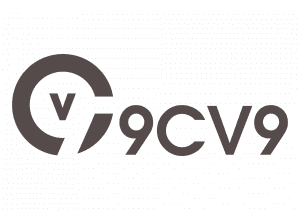









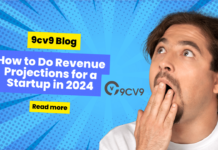
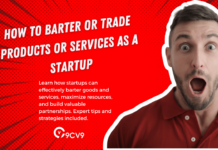



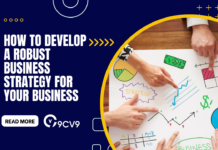

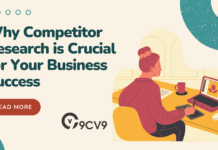
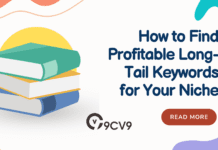



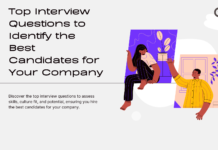
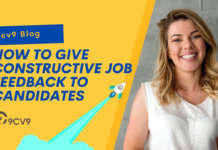







![Writing A Good CV [6 Tips To Improve Your CV] 6 Tips To Improve Your CV](https://blog.9cv9.com/wp-content/uploads/2020/06/2020-06-02-2-100x70.png)


